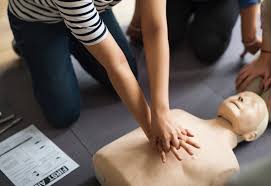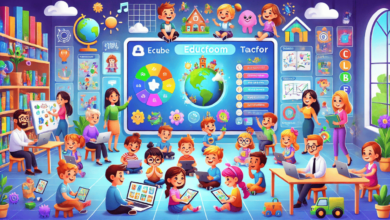When Every Second Counts: The Impact of First Aid Training in Natural Disasters

When disaster strikes, chaos and confusion often follow. As nature’s fury unfolds, time seems to warp, with seconds stretching into excruciatingly long moments. In such instances, being equipped with first aid knowledge can be the difference between life and death. Natural disasters like earthquakes, floods, wildfires, and hurricanes create environments where injuries and medical emergencies can occur rapidly. In these situations, professional medical help may be delayed or unavailable due to the scale of the disaster or its remote location. First aid training equips individuals with the skills necessary to respond effectively, providing immediate care for trauma injuries, fractures, burns, and even performing CPR in cases of cardiac arrest.
During a natural disaster, having first aid training enables people to prioritize treatment, assess the situation, and respond swiftly in a high-stress setting. As bystanders become vital responders in the face of uncertainty, these abilities can significantly increase the likelihood of survival before assistance arrives. People who are confident in their ability to care for others can treat wounds, provide emotional support, and keep patients stable until they can get expert medical assistance. Knowing how to administer first aid in an emergency is crucial because in these situations, being able to act quickly and compassionately can save lives.
The Importance of First Aid Training in Crisis Situations
If a hurricane barrels towards your community or an earthquake rattles the ground beneath, would you know how to respond if someone was injured? First aid training provides the foundational skills to handle such scenarios with composure and certainty. First aid training programs by trusted providers such as First Aid Training Brisbane aren’t just about learning how to treat wounds; they are about empowerment. With these skills, individuals gain confidence and competence, enhancing their ability to act decisively rather than becoming overwhelmed by panic.
First aid skills transform bystanders into lifesavers. Knowledge of CPR and other emergency procedures can double or triple survival chances. In addition, by instilling a basic understanding of medical interventions, first aid courses motivate communities into becoming first responders until professional help arrives.
Tailored Training: Adapting Skills for Various Disasters
One of the most significant aspects of first aid training is its adaptability. Different disasters pose different health challenges, and first aid courses often tailor instructions to address these specifics.
Floods and Hurricanes: Understanding Water-Related Hazards
Floods and hurricanes bring a unique set of challenges, such as hypothermia and the risk of drowning. Training programs help individuals understand these risks and provide effective strategies to mitigate them.
- Maintaining an open airway and knowing the recovery position are crucial in these scenarios.
- Recognizing and managing hypothermia require expedient action to prevent severe outcomes.
Earthquakes: The Unseen Dangers
Earthquakes, with their unpredictable nature, often result in physical trauma, from broken bones to serious bleeding events. Here, first aid training focuses on:
- Properly immobilizing broken limbs.
- Using direct pressure to control severe bleeding until advanced medical help arrives.
First Aid Training: A Lifelong Investment
Having witnessed a friend’s asthma attack during a storm, I realized firsthand the importance of preparation. During our first aid course, we role-played similar scenarios, preparing us not only for medical emergencies but also for maintaining calm amidst chaos. This experience highlighted that in high-stress situations, having the knowledge to act quickly can make all the difference. First aid training, surprisingly, isn’t just about tending to physical injuries. It equips individuals with psychological readiness, enabling them to stay calm, assess situations objectively, and provide both medical and emotional support to others. Techniques in Mental First Aid (MFA) help manage emotional distress effectively. Offering reassurance to victims plays a crucial role in overall casualty care, helping them feel more secure in the midst of panic.
CPR and First Aid Training should be viewed as a lifetime investment, even if many people consider it to be a required course or workplace necessity. Regular refreshers help responders stay current with medical practices by ensuring that the abilities they have learned continue to grow. Furthermore, developing competence and confidence in real-world scenarios is more important than merely mastering technical skills. Additionally, accessibility becomes crucial in order to optimize the advantages of first aid education. By incorporating these talents into community initiatives and school curricula, communities should work to provide extensive training opportunities. By doing this, we promote a culture of alertness and preparedness, guaranteeing that individuals of all ages are prepared to take prompt action in the event of an emergency. In the end, this proactive strategy may result in communities that are safer and more resilient, where people are empowered to make a difference in moments of crisis.
Conclusion
In the face of nature’s unpredictability, we cannot afford complacency. Whether you’re in a quiet suburb or a bustling urban environment, emergencies are indiscriminate. First aid training offers a toolkit of knowledge and resilience, fortifying individuals and communities against disaster’s unpredictable blows.
As we move forward, it’s crucial to ask ourselves: Are we as ready as we can be? Learning first aid is a powerful step toward preparedness. Let us take the initiative today, ensuring we stand ready to save lives when it matters most.



